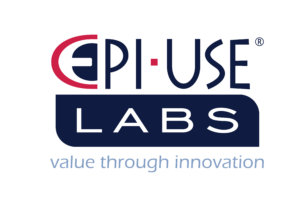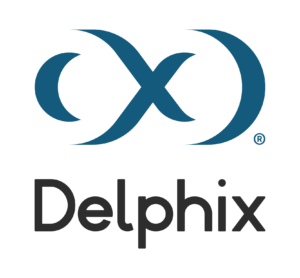Cloud and SAP S/4HANA DevOps
Webinar On-Demand
Meet the Experts
Key Takeaways
⇨ Learn about where SAP customers are on their journey to a DevOps model.
⇨ Find out how SAP S/4HANA plans are impacting change management and testing.
⇨ Understand how respondents are modernizing with Agile, DevOps, Testing automation and other technologies and tools.
Deepa Salem (00:00):
Welcome to Ute for this webinar on our Benchmark Survey Cloud and SAP S/4 for HANA DevOps. As you all know, this is a very important topic with sap customers joining the crowd of companies that are adopting Agile and DevOps for their development. We are thankful for our sponsors basis Technologies, Delphix and Fuse Labs for sponsoring this research. In this webinar. We’ll start out with an overview of the research project. We’ll give you a, a snapshot of who took the survey, and then we’ll go into our DART methodology to understand some of the insights that have come out of the survey. We’ll wrap up with some recommendations, and we look forward to your questions. Our research focused on IT and business decision makers from enterprise companies across the globe. The objective was to understand how they are managing their testing and change management today to deliver faster and high quality applications and updates. We examined the driver’s actions requires, and technologies on which they’re focused as part of this strategy.
(01:17):
The project, uh, began in August, 2022. Uh, we surveyed 154 members of the a p Insider community. We also conducted some post survey interviews with several respondents. Most of the respondents were from North America, as you see, 63 percenters from North America with, uh, the remaining spread across M A I A P J and Latin America. With respect to the roles that we surveyed, a majority of 44% was from IT management and a 12% from IT operations and the re spread across many functions in it. With respect to industries, the majority of the, uh, respondents were from the software and technology, uh, sector, followed by industrial and public sector. This is what you would expect from a typical s a P survey with, uh, some of the major industries, uh, spanning these particular ones that you see in the chart. Let’s go into the survey snapshot, uh, the executor summary, uh, that, uh, came out from the survey.
(02:36):
Firstly, the survey points out that there is an increasing demand for updates and upgrades to S A P, uh, as well as meeting business demands rapidly and with high quality. As you know, the pace of change at S A P has really increased with, uh, not just with S A P S for hana, but a slew of applications that are available in with S A S A P has also been very active in pushing, uh, faster or more frequent upgrades and updates. So all of this are pushing for more increased demand for change management and testing. Uh, notwithstanding, uh, you know, the demand from business as well for more applications, more integrations across a applications as well as many deployment venues that are adding to the complexity. There’s a huge amount of challenges in planning and road mapping, ineffective collaboration and lack of appropriate tools. Many customers complain about, uh, the organizational elements of change management and testing, and not just the technology elements. Regulatory compliance and test data security are also very critical.
(03:43):
We also look at some specifics on change management and specifics on testing. With respect to change management, what we find is that almost 40% are not very satisfied with the change management processes. We look at some of the reasons later. Uh, what is important for companies in change management is reduction of risk and disrupt and reduction of disruption, while also delivering rapid updates and upgrades. Uh, there’s automation and, uh, move to Agile and DevOps with the most attempted strategies. You know, we’ll see some of the detail later. Uh, if with respect to the change management methodologies that the frameworks being used, what of all still dominates across core S A P, but more and more companies are, are trying to adopt agile for newer solutions. DevOps is making a small, uh, entry, especially for B T P and analytics. Uh, about 50% are claiming that they’re planning to move, uh, to agile DevOps for either all S a P or part of it.
(04:46):
With respect to testing, the numbers are very similar. Uh, only about 40%, 42% are partially or slightly satisfied with their testing, which means a substantial number are not. Um, with respect to the goals for testing, uh, companies are looking for rapid, yet higher quality testing with production quality test data and integration testing, testing automation and end-to-end process testing are popular strategies for almost all SAP solutions. A very number of small number of companies are attempting trials and, uh, artificial intelligence and machine learning, especially for SAP s for HANA and SAP s for HANA Cloud high quality test data is crucial for regression and integration testing, as well as an ensuring compliance and for migration. Finally, the move to SAPs for HANA is definitely making companies pause and think of how to, uh, uh, you know, use more, uh, transformation for change management and testing, including test automation, integration testing, DevOps, and so on. So, it is a very exciting time for SAP customers, especially with the move to SAP hana, as well as the, the pace of change and the enormous amount of technologies that are being available today. Let’s go into some of the details behind this date, this, uh, these findings.
(06:04):
SAP P Insider uses the DART methodology to analyze some of the trends that are happening within SAP customers. So the DART stands for drivers actions, requirements and technologies. The drivers are macro level events that are impacting an organization. They can be both external and internal. For example, it could be, um, you know, a huge amount of acquisitions in a sector or supply chain issues that we faced in the last couple of years. They can also be the multi s a s for HANA or the cloud that are most strategic actions that our companies going towards. Actions are strategies that companies are implementing to address these drivers. They are, they could be an integration of people, process and technologies. Requirements are some business and process level requirements to support the strategies. And finally, technologies are the several software, hardware, system level requirements that are enabling some of these strategies that the companies adopting.
(07:05):
So let’s start with the drivers. What are some of the drivers for change management and testing today? Uh, the vast majority of customers are claiming that they want to minimize IT costs with scalable, reusable processes and tools, IT budgets have never been, uh, generous. But now especially with, uh, enormous amount of, uh, expenditure needed for development, Han migration, cloud development, the amount of, uh, uh, operating costs available for change management testing is pretty limited. 34% are, uh, claiming that one of their drivers is fast changing business demands, which are requiring, requiring resilience to change. In adaptability, the pressure to deploy new SAP applications or updates rapidly with no or negligible downtime is the, uh, third most important driver integration of sap with increasing number of applications on many deployment venues is also in the top. SAP P Insider has been, uh, doing research on integration for the last several years, and we find that the number of integration points with SAP P has been increasing year over year. So obviously this is a very important to, uh, topic, and you will see this across the survey where customers are claiming that integration integration testing, integration testing tools are all very, very important.
(08:31):
Uh, we asked this question on how the move to SAP HANA is impacting change management and testing. So, um, definitely it has an impact. Uh, in the survey about, uh, 65% of the survey respondents were either moving or were planning their moved SAP hana outta those 50, 65%. Uh, 50% are claiming that the move to SAP is for HANA is increasing their use of test automation. 47% of these companies are saying that they’re increasing integration testing. 45% are increasing end-to-end process testing. 31% are increased usability testing and 28% are implementing Agile DevOps. Now, all of these obviously have an impact on the company’s future in change management and testing. It does seem like SAPs for HANA is having, is being a catalyst for some transformation in this area.
(09:30):
Then we move into some of the requirements for change management in testing. Uh, obviously by far the most important requirement is, uh, meeting regulatory and legal requirements and documentation. I mean, obviously that’s very crucial when it, when you’re looking at software change as well as testing. Uh, companies are also looking for process understanding. Cause as they move to S A P S for hana, we are interested in understanding business processes as and business process processes, uh, in the future so that they can plan for migration as well as migration testing. Supporting core alignment of cores SAP systems is very important. Our, uh, database is primarily consisting of very strong, very, uh, cores, SAP customers, and for them having alignment with their legacy SAP systems is very crucial. Some others are also requiring clearly stated rules for functional and non-functional testing. And then, uh, access management for sap, non-SAP P applications, written data.
(10:33):
There are some key challenges that are coming up with respect to change management and testing. Uh, the most important requirement is poor requirements, planning and roadmaps. Um, obviously this is, uh, less about technology and more about, uh, the organizational issues on, uh, with respect to change management and testing. 34% claim that they have, uh, a lack of adding appropriate tools for change management and testing. 34% are claiming that there is delays in provisioning test data for development and testing. And then the other, some of the other more important, uh, challenges come around in immature DevOps and agile, uh, ineffective collaboration that points to some of the expertise in DevOps and Agile. Uh, all of this is obviously resulting in many post-deployment issues, downtime at, at 33% of the customers.
(11:33):
Now, we go in and, and explore a little bit about change management specifically, uh, to, to understand what’s happening in that space. What are some of their goals, what are some of their, uh, challenges as well as what they are planning going forward. Uh, the goals for change management, the predominant one is around reduction of business risk. Uh, as much as there is a rapid change, rapid pace of change with, uh, s a P, uh, that does not, uh, minimize the re reduct, uh, need for maintaining or reduc reducing business risk cost already came up as we explored earlier, the reduction of it costs is one of the key goals. Rapid deployment of app updates and new applications is also in a very important goal for many of the customers.
(12:23):
Uh, we had a question around how is the change management processes and tools for s a P meeting that business requirements today? As we said earlier, uh, about 40% are only partially or slightly, or not at all satisfied. So, uh, that is a, there’s a large number of customers who are, uh, you know, in need of transformation, in need of better tools, in need of better processes for their change management and business requirements. 14% do say that they’re very happy, and 47% are mostly satisfied. With respect to, uh, some of the, uh, key, uh, drivers, some of the key actions that companies are u using in change management to address the drivers, 42% are claiming that they’re increasing automation to reduce cost and increase scalability. Uh, 42% are also implementing Agile or DevOps for s A p, uh, enabling for 33% are doing some other processes, some other organizational changes to, in order to enable early collaboration across s sap knowns, sap IT and business teams. 28% are setting up a governance and access model for SAP and integrations. And finally, 26% are streamlining the a p change management processes with just existing tool chains. So, not, not anything new, but using ex existing tool chains that may include solution manager or SAP’s own tools.
(13:57):
Now, uh, as you all know, uh, the tools for, uh, the frameworks for change management are, uh, you know, obviously Waterfall has been the leading change management framework for SAP forever. Uh, but definitely the, the conversations around Agile, the adoption of agile in non-SAP P infrastructure in the company is also making, is also triggering the use of Agile DevOps within the s a P space. So when you look at, uh, the different frameworks across different s solutions being used, you see that Waterfall is still predominantly in use in SAP business, one business by design, mostly in smaller companies. It’s also, uh, somewhat leading in a ACC business suite. However, you see that Agile is coming up very, very strongly across the board, um, even in, uh, e ACC business suite with 34% in business apps, which is CR R M H R supply chain, and so on, 52%, uh, s for hana, 50% and so on as SAP p s for HANA cloud of 57%.
(15:01):
However, on exploration with many of the respondents, uh, it does seem like, you know, even though they’re claiming to use Agile, it may for a small project or it may be an experimental, uh, trial rather than something that’s more, more pervasive. Similarly, a few are ha uh, claiming that they are using DevOps for some of the solutions like the B T P as well as analytics, uh, bi and data warehousing. Again, it remains to be seen if this is a pervasive across the board implementation or if it’s only a pilot or a sandbox, kind of a model.
(15:38):
That said, many companies are planning, uh, rollout Agile DevOps. 30, 30% are planning to roll it across all S A P, including S A P, CCC Business Suite or hana. Uh, 18% are planning to roll it out, but not to S A P E C Business Suite or hana, but maybe only to B TP or FII or, um, analytics and so on. 30% are still evaluating rollout, whereas the rest have no plans. We have a similar look at testing in detail, uh, based on, you know, some of the same questions around what are the goals of their testing, what are some of the actions they’re taking in testing, as well as what are some of the, uh, tools and technologies they’re using with respect to goals for testing. Uh, rapid testing to meet critical business needs is the number one, uh, you know, predominant goal with respect to testing IT cost come as a second goal.
(16:35):
Similar to change management, uh, 49% are, uh, asking for higher quality testing using production quality test. Data integration testing across hybrid applications and deployment venues is very, very important. As I mentioned earlier, uh, as the integration points with s a P increase, uh, the testing across in all these integration points also becomes very, very important. Uh, not just across different applications, but also different deployment venues. 34% do want broader stakeholder and user satisfaction. And finally, uh, 25% have an organization push for automation. So all of these are, uh, obviously the many companies have multiple goals, not just one of them. So this is just an aggregate of all that they have chosen the que we asked a question similar to change management around how well, how much they’re satisfied with their testing processes and tools. For S A P, what we see is that, again, about 42% are only partially or slightly satisfied. So there’s a lot of, uh, con many, many companies who are in need of, uh, a better, uh, testing process, maybe more testing technologies to enable better testing. However, about 51% are mostly satisfied. So it seems like they do have it in control,
(18:00):
Uh, with respect to testing actions and, uh, to testing drivers. Uh, what are, what are some of the actions they’re taking? Uh, what we noticed, uh, from the surveys that 35% are implementing testing automation, uh, either in a company, why don’t a targeted manner, obviously it starts off with one or two solutions, and then it expands across the board. Uh, often these are bottoms up kind of initiatives where some team, uh, start, it starts experimenting, and then it, it becomes company wide. Um, secondly, 33% are implementing end-to-end process testing discipline to tackle increased integrations with s A P. Now, this entire concept of multi-channel, um, applications, especially with e-commerce, where, you know, you have across the board, uh, laptop to mobile to wa to voice to bots. So the implementation of a end-to-end process testing is becoming very, very important. Within the s a P space. Uh, 31% are enabling early collaboration across s a p non S A P I and business teams. 24% are investing in more user experience and testing, and 22% are trying to implement a company-wide testing strategy and framework and not leaving it to the individual project teams.
(19:16):
Uh, we looked at some of the testing methods by the SAP solution because there is a wide, uh, range of, uh, wide variety in what kind of testing methods are being used across different SAP solutions. Uh, so we looked at, for example, whether they’re using test automation, end-to-end process testing, uh, performance testing, uh, ai, machine learning, and so on. And, uh, what we find is with performance end-to-end process testing is really shooting up as one of the more, uh, important, um, uh, testing, um, uh, you know, frameworks across the board, but especially with respect to business apps like C R M H R Finance and so on, as well as with S A P S for, and with, um, E C C, you do see a test automation coming up, especially with S S A S Fahan Cloud, uh, as well as with E C C.
(20:07):
Uh, you see performance testing also very, very important, especially for e-commerce, where you would expect to have, where customers would expect to have high performance for, you know, that e-commerce processes or, or transactions. Um, user experience testing, obviously, as you would expect, you know, it’s very high for e-commerce transactions as well as for fii, um, as well as for, uh, you know, analytics bi where user experience is very, very crucial. Uh, AI ML is coming up though very, very, in a very small manner, especially with respect to s SAP S for HANA Cloud and SAP S for hana.
(20:49):
Now, uh, you know, with respect to testing, uh, test data is very, very crucial, as you all know. Um, uh, the, the quality of test test data, the quality of provisioning of test data has a huge impact on the quality of the application and, uh, obviously business user satisfaction. So we ask the question around the importance of test data across different areas of testing as well as business processes. And what we found is that, uh, test data is very, very important for regression testing and for integration testing of, uh, S A P and non-SAP P followed by compliance. Uh, it is also very, very important for training. So many, many companies, about 50% are saying that, uh, test data is very important for training end users for feature rollout, as well as for implementing new modules. So, um, you see across the board that, uh, you know, uh, uh, test data is very important or, uh, important for many, many of these areas, which means companies have to invest more in creation and maintenance of good test data.
(21:55):
So now we go into some of the technologies that companies are either using or planning to use or evaluating. So on the left, you see companies that are, uh, using, uh, some of these, uh, technologies, and in the middle there are companies that are implementing, and, and towards the end, towards the right are companies, uh, that are evaluating some of these technologies. So, as you would expect, uh, you know, many companies do use change and release management tool. It could be s a p, solution manager kind of tools, um, and se several are evaluating them. Uh, security testing has been, uh, you know, leading, uh, or as far as use is concerned, uh, defect trackers are being very much u in use. Test monitoring is definitely in use. Uh, our AppSource control tools, and obviously I assume expect spreadsheets are very much in use for change management.
(22:47):
Um, uh, with respect to testing, you, you know, you kind of see down here that test automation is being used at 40% of the companies and so on. But when you look at the implementation, you see test automation is leading the pack with 20% claiming they’re going to use, um, they’re gonna implement test test automation. Um, 19% are want to use implement, uh, integration API testing tools. 18% are using test data management and creation tools and so on. But when you look at evaluating, 39% are trying to implement or evaluate process mining and process discovery tools, and as well as AI machine learning tools for testing and change management.
(23:30):
So there’s a lot of activity happening in this space with companies either implementing a whole lot of, uh, tools or evaluating them, and several tools have come into the market from SAP as well as third parties, uh, cloud-based solutions, uh, to address many of these problems, many of these solutions. So you would expect a lot more experimentation in this space in the, in the coming years. Uh, we asked this question around who are the decision makers around change management and testing? Um, and, uh, what we saw is that in about 50% of the companies, it’s the IT director or the vice president who is, uh, leading the decisions around SAP P change management testing. The cio, C T O does have a role in 38% of the companies. Uh, but as you see, uh, the individual project teams or the testing teams are a minority and very, very few companies do these teams, uh, make any decisions around change management and testing practices and technologies.
(24:31):
Uh, with that, we come to the end of our, uh, the survey responses itself, the insights that we found from the survey, uh, from s a P Insider. We’d love to, you know, we’d like to make some recommendations to companies on this particular, very, very important topic. Um, as you would expect, you know, these two functions, change management testing, a very, very vital part of the overall IT strategy. Uh, but companies do have to make it a vital part of the over, uh, overall strategy and ensure that their criticality for transformation is well known and communicated. Uh, that what does that mean? It means that it, it’s, we ensure adequate importances given to these topics. We ensure that executors are involved. We ensure adequate budget for implementing, uh, some technologies or even some frameworks within the company, uh, increased communication as well as better goals and SLAs that are given for change management and testing, uh, early, early ahead of time, and not as a, as an afterthought.
(25:33):
Secondly, uh, companies definitely have to upskill their teams in agile DevOps, ai, ML testing, automation, process mining, et cetera. Uh, this is can be done through bottom up modernization for maximum adoption, which means there are change leaders within the company who can actually drive some of these, uh, technologies or frameworks who can develop some stakeholder involvement and provide continuous training so that the transformation is lasting as well as pervasive across the company. Thirdly, uh, we can engage business users earlier to be critical collaborators for both user experience and end-to-end process testing. It’s very, very crucial to have their contribution and leadership. Um, and some companies that we spoke to are actually making it part of the job description and performance schools of these business users. Finally, as we all know it, budgets are not going to be generous for change management testing, especially when there are a whole lot of, uh, you know, applications that need to be deployed as along with SAS for Hannah and Cloud and so on.
(26:34):
So companies do have to identify ways to do more with less, uh, including, you know, with concepts such as testing, uh, you reuse of artifacts, automation, ai, ml, and so on. Uh, what does that mean? This means IT departments can present a business case, uh, by swapping out existing cost buckets for new ones and showing the higher impact possible, uh, for the incremental budget increase. So it, this requires a very much business driven, r driven mindset, uh, to, to enable some transformation, enable investment in some technologies. So here are some, the, some recommendations that we have seen that work in some of our customers who are really, uh, you know, leading the pack with respect to their satisfaction that we found in these surveys. So we come to the end of our, um, the survey, uh, the webinar. Uh, if there are any questions, uh, please do shoot them. Uh, uh, again, thank you for watching and, uh, this particular report is on our website as well. Please do, uh, visit sap insider dot uh org and download the report. Uh, and again, we thank our research sponsors Basis Technologies, Delphix and FPU Slab. Thank you very much for joining this webinar.












